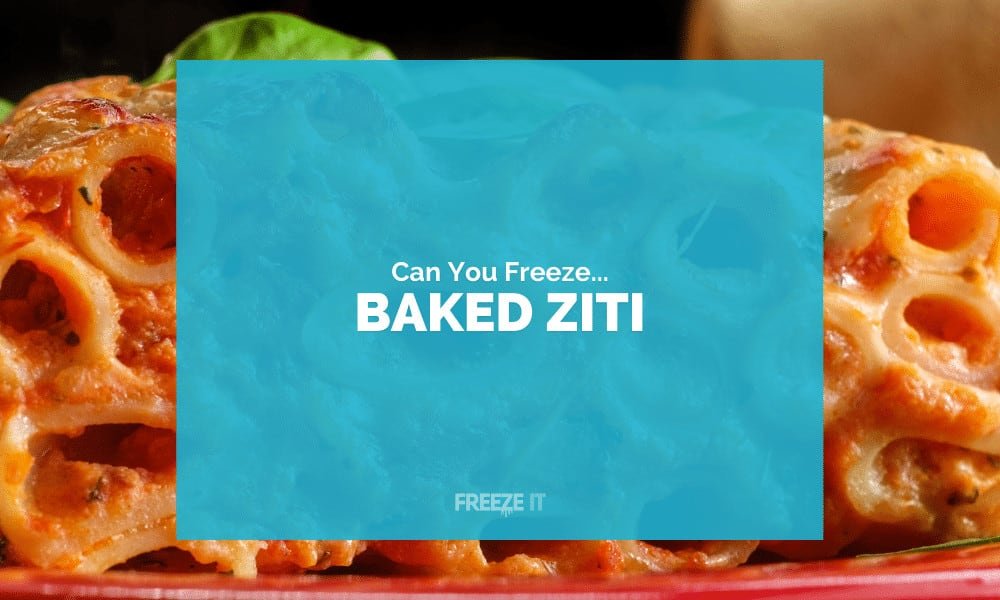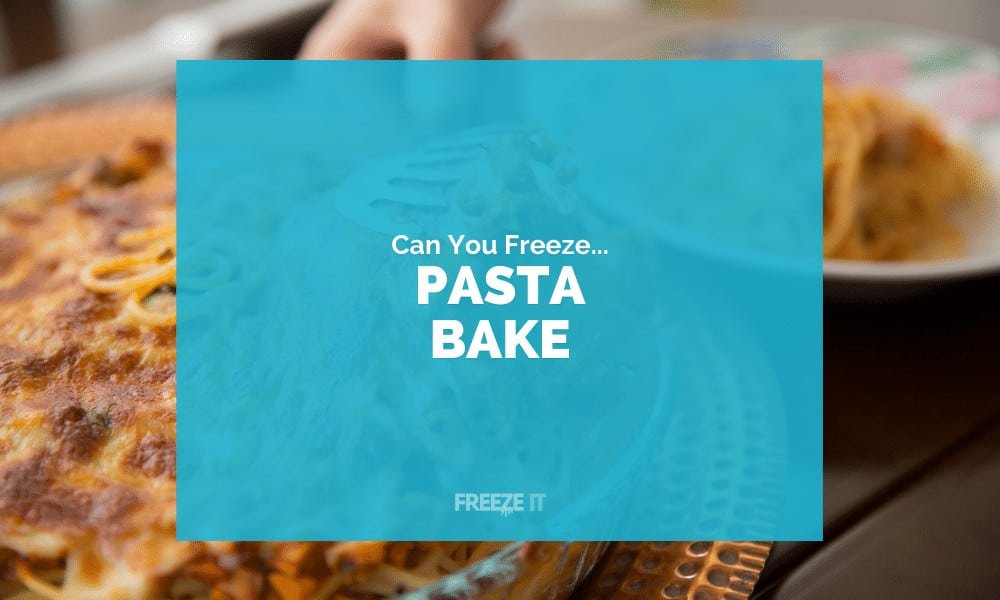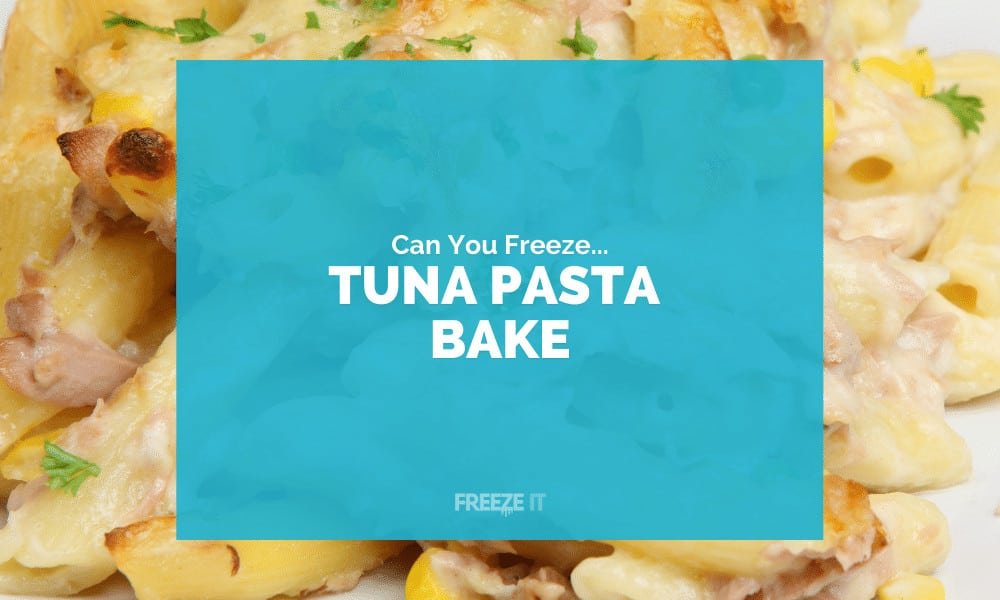While it’s hard to beat the shelf life of dried pasta shapes that we can buy from the supermarket, it’s hard to beat the taste of fresh or homemade pasta. But what’s the best way to store different types of pasta?
Can You Freeze Pasta?
Yes, you can freeze pasta for up to 3 months. Yes, you can freeze pasta, including ribbons, shapes and even filled pasta. It can be frozen for up to 3 months. Remember, you don’t need to freeze dried pasta that you have purchased from the supermarket, as it has an extremely long shelf life.
Do Does Pasta freeze well? Yes
Can you refreeze Pasta? No
How to Freeze Pasta
You’ll be pleased to hear that freezing pasta is super straightforward, and you can freeze it uncooked or cooked; it’s entirely up to you.
Given that the most common types of pasta we enjoy are ribbons, shapes, and filled, we explain the freezing process for each type of pasta below, so you never have to let your fresh or homemade pasta go to waste:
How to Freeze Pasta Ribbons and Shapes
Below is our basic method for freezing most pasta of differing shapes and sizes. This includes spaghetti, pappardelle, penne or rigatoni:
- Flash Freeze: The first thing you need to do is to flash freeze your pasta ribbons and shapes, as this will prevent them from sticking together in the freezer. Line a tray with some baking parchment and scatter your pasta, ensuring it isn’t overlapping or bunched together. Then, place the tray in the freezer for two hours.
- Bag Up: Once you have your ribbons or shapes are frozen solid, remove them from the freezer. You can then drop them into freezer-safe bags, and rest assured that they won’t stick together in the freezer.
- Label and Freeze: Write today’s date, as well as the use-by date on the front of the bag and place it in the freezer. Remember, you can freeze pasta ribbons or shapes for around three months without any issues.

How to Freeze Filled Pasta
If you have made filled pasta, such as ravioli or tortellini, then here is the best way to freeze them:
- Flash Freeze: Initially, line a tray with baking parchment and lie each of the filled pasta pieces out on top, taking care not to damage them in the process. Then, place the tray in the freezer and leave it for around two hours, or until the pasta has frozen solid.
- Place in a Container: Remove the tray from the freezer and pick the filled pasta shells from the tray. Then, pick a suitable container and lay your shells within. If you’re going to stack them, it’s best to place a layer of baking parchment in between, just to be on the safe side and to ensure they don’t stick together.
- Label and Freeze: Write today’s date, as well as the use-by date on the front of the container and place it in the freezer. Remember, you can freeze filled pasta for around three months without any issues.

3 Tips for Freezing Pasta
Now you know how to freeze it, we’ve got our 3 top tips which we strongly recommend following when freezing pasta to have the best results:
Freeze Fresh or Homemade Pasta
Dried pasta has an extremely long shelf life and is probably good for several years when kept in a sealed container in your cupboard. As such, there’s absolutely no need to freeze dried pasta. Instead, you should follow the instructions above to freeze fresh or homemade pasta.
Always Flash Freeze
If you place fresh pasta directly into freezer-safe bags or containers without flash-freezing it first, you will end up with a combined mess on your hands! You need to take the time to flash freeze your pasta first, as this ensures it won’t all stick together in the freezer.
Freeze Without Sauce for the Best Results
While you can freeze cooked pasta in sauce and with other ingredients, it’s best to freeze your pasta separately from any accompaniments for the best results. You can then always add sauce and other ingredients once you have defrosted and heated your frozen pasta.
How Long Can You Freeze Pasta?
You can freeze pasta for around three months. Some people may keep pasta in the freezer for longer than this, but we’d advise you not to as its texture will start to change.
If you’re looking for pasta that will last for longer than three months, opt for dried pasta, as you can store it for more than one year in your cupboard without any issue.
Fresh pasta will only keep for 2 to 3 days in the fridge before it begins to dry out. If the pasta is filled with meat, then only keep it in the fridge for up to 2 days.
How Do You Defrost Pasta?
The best way to defrost frozen pasta is to transfer it from the freezer to the fridge the night before you plan to enjoy it. This will give your pasta sufficient time to thaw and is perfectly safe.
While you might be tempted to defrost your pasta in the microwave, doing so can affect its consistency, so we’d avoid doing so for the best results.
Can You Refreeze Pasta?
Technically, there’s nothing wrong with refreezing pasta, but we wouldn’t recommend it.
Fresh and homemade pasta is particularly delicate, and the moisture content generated throughout the freezing process can cause your pasta to soften and ultimately go soggy. For delicious pasta, we’d recommend freezing it once.
Does Pasta Freeze Well?
Generally, fresh and homemade pasta shapes, ribbons, and filled shells freeze well. The most important thing to remember is to flash freeze them, as failing to do so will mean your pasta sticks together.
Related FAQs
If you’ve still got questions about freezing pasta or pasta in general, then these may help:
Yes, you can freeze a whole range of pasta sauces from a basic tomato sauce to a puttanesca sauce. Once the sauce has cooled, decant into airtight containers, seal with the lid and then place into the freezer.
Yes, filled pasta should be frozen on a baking sheet until solid and then tipped into a Tupperware container to be stored for the longer term.






